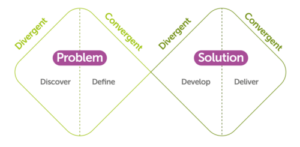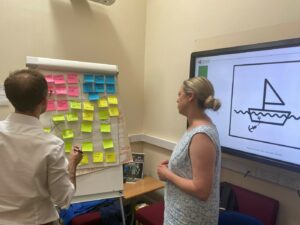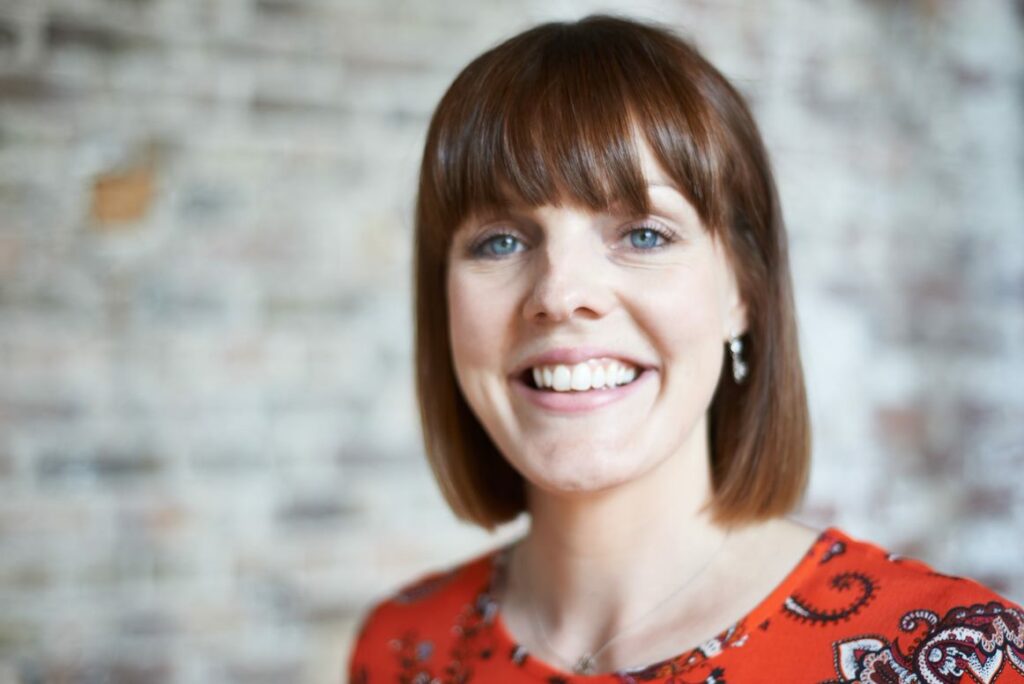At the AHSN NENC, we often hear about problems and unmet needs in the healthcare system. In an NHS stretched for resource, healthcare teams tell us that there isn’t always time to take a step back to assess how and where improvements to services can be made.
In this blog, Sarah Rendall, Digital Transformation Programme Manager, introduces our new Design Sprints in Healthcare project. This project uses design thinking tools to support NHS teams to create solutions to current challenges and redesign existing processes.
Below, Sarah tells us more about design sprints and how they are working in practice, to ultimately make a positive impact on services for patients.
We thrive on innovation. It’s what we love and why we at the AHSN NENC are here. Innovation isn’t just the end product in the form of new gadgets or something ‘smart’ to make our lives easier though. Innovation starts from the conception of the initial idea, that lightbulb moment when faced with a problem. This is illustrated beautifully through our Innovation Pathway.
Design Thinking
You may have heard of the term ‘design thinking’. If you haven’t, then you’re not alone. Design thinking has been used for years in product design and development and is now being embraced in the business world as a way of taking a step back and designing solutions to all sorts of problems.
The concept of design thinking involves a human-centred approach to product and service design, repeatedly going through the process of creating lots of ideas (diverged thinking) and then redefining and narrowing down these ideas (convergent thinking).
This can be best demonstrated with the Double Diamond.

Case study – a design sprint for the NHS
I’ve been lucky enough to see first-hand how design thinking can be applied to benefit the system as the Programme Lead for the ‘Design Sprints in Healthcare’ Project. As part of this project, the AHSN NENC has supported the NHS in Durham to apply design thinking tools and methodologies to create solutions and redesign existing processes.
The project was an idea brought to the AHSN NENC by Dr Mike Smith, a local GP and clinical leader who realised the potential to apply design thinking to solve big problems in healthcare.
Traditionally a design sprint from start to finish takes place over five days. As we know, time is extremely precious, and resources are stretched so it’s not possible to take staff out of the system for five days. This meant we had to think about how we were going to make time and space to think creatively!
The outcomes of a design sprint have the potential to create efficiencies and make a positive impact on the health and social care of patients, so it was important to find a way to make this happen. Therefore, a key objective of the Design Sprints in Healthcare project is to test design thinking methodologies and identify what can be achieved over a 1–2 day period.
To date, the ‘Design Sprints in Healthcare’ project has involved two design sprints. The first brought together GPs from across two surgeries, an Assistant Practice Manager, Healthcare Coordinator and a patient (on the hottest day of the year in July 2022!) to redefine how eConsult should be used in their practice.
The second sprint looked at the interface between Primary Care and Same Day Emergency Care. It was felt that the referral process of patients had developed organically and taking a step back and assessing where improvements could be made would benefit both teams and in turn, patients.

It was amazing what we achieved. In the second design sprint participants had been introduced to the concept of design thinking, took part in an ice breaker exercise, outlined the referral process, and identified where the pressures were and what the priorities should be, all in an hour and 20 minutes. This would have taken so much longer over emails and traditional meetings. By the end of the day, the group had redesigned the referral pathway completely, identifying a solution they can take forward within the trust as a pilot. Success!
Look out for Sarah’s follow up blog next week, where she shares her ‘top tips’ and learnings about applying design thinking in the NHS.
If you have a project, process or pathway which you think would benefit from the application of design thinking, then get in touch with Sarah at [email protected].

